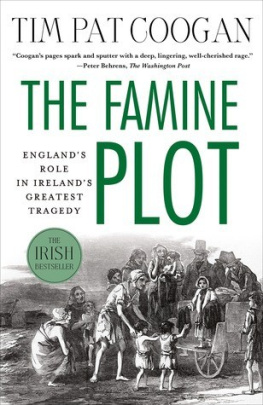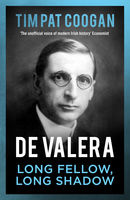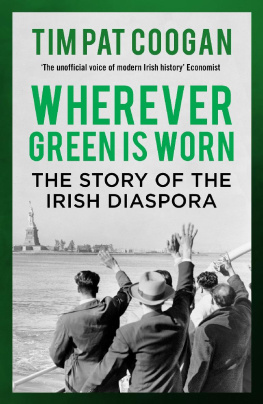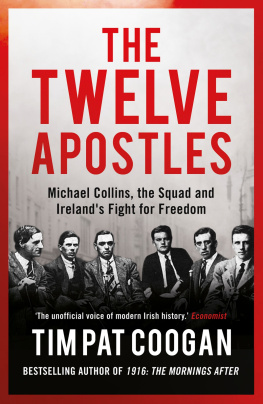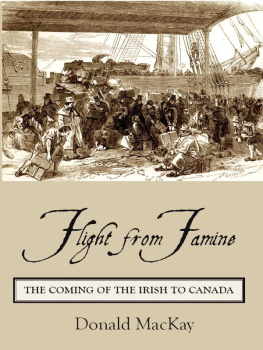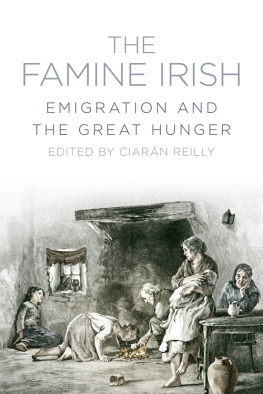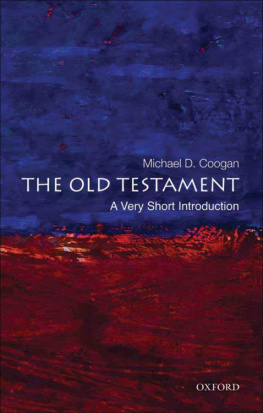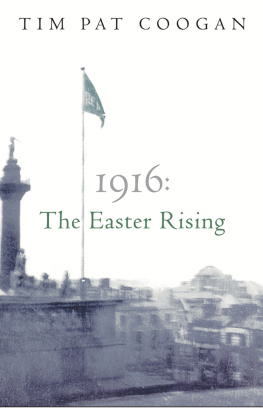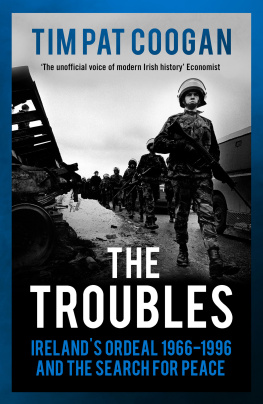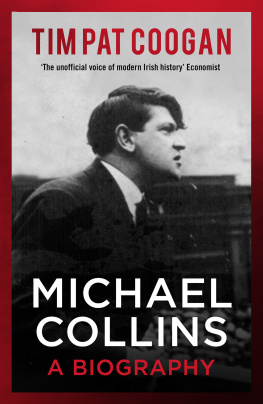Tim Pat Coogan - The Famine Plot: Englands Role in Irelands Greatest Tragedy
Here you can read online Tim Pat Coogan - The Famine Plot: Englands Role in Irelands Greatest Tragedy full text of the book (entire story) in english for free. Download pdf and epub, get meaning, cover and reviews about this ebook. year: 2012, publisher: Macmillan, genre: Art. Description of the work, (preface) as well as reviews are available. Best literature library LitArk.com created for fans of good reading and offers a wide selection of genres:
Romance novel
Science fiction
Adventure
Detective
Science
History
Home and family
Prose
Art
Politics
Computer
Non-fiction
Religion
Business
Children
Humor
Choose a favorite category and find really read worthwhile books. Enjoy immersion in the world of imagination, feel the emotions of the characters or learn something new for yourself, make an fascinating discovery.
- Book:The Famine Plot: Englands Role in Irelands Greatest Tragedy
- Author:
- Publisher:Macmillan
- Genre:
- Year:2012
- Rating:5 / 5
- Favourites:Add to favourites
- Your mark:
- 100
- 1
- 2
- 3
- 4
- 5
The Famine Plot: Englands Role in Irelands Greatest Tragedy: summary, description and annotation
We offer to read an annotation, description, summary or preface (depends on what the author of the book "The Famine Plot: Englands Role in Irelands Greatest Tragedy" wrote himself). If you haven't found the necessary information about the book — write in the comments, we will try to find it.
The Famine Plot: Englands Role in Irelands Greatest Tragedy — read online for free the complete book (whole text) full work
Below is the text of the book, divided by pages. System saving the place of the last page read, allows you to conveniently read the book "The Famine Plot: Englands Role in Irelands Greatest Tragedy" online for free, without having to search again every time where you left off. Put a bookmark, and you can go to the page where you finished reading at any time.
Font size:
Interval:
Bookmark:
THE FAMINE
PLOT
ENGLANDS ROLE IN IRELANDS GREATEST TRAGEDY
TIM PAT COOGAN

To doctors Tim Fulcher and Dave Keegan and to my daughters Jackie and Olwen and granddaughters Thomond, Olwen, Fodhla, and Emma, without whose combined efforts this book would not have happened.

THE FAMINE PLOT
Copyright Tim Pat Coogan, 2012.
All rights reserved.
First published in 2012 by PALGRAVE MACMILLAN in the U.S. a division of St. Martins Press LLC, 175 Fifth Avenue, New York, NY 10010.
Where this book is distributed in the UK, Europe, and the rest of the world, this is by Palgrave Macmillan, a division of Macmillan Publishers Limited, registered in England, company number 785998, of Houndmills, Basingstoke, Hampshire RG21 6XS.
Palgrave Macmillan is the global academic imprint of the above companies and has companies and representatives throughout the world.
Palgrave and Macmillan are registered trademarks in the United States, the United Kingdom, Europe, and other countries.
ISBN: 978-0-230-10952-0
Library of Congress Cataloging-in-Publication Data
Coogan, Tim Pat, 1935
The famine plot : Englands role in Irelands greatest tragedy / Tim Pat Coogan.
p. cm.
1. IrelandHistoryFamine, 18451852Historiography. 2. FaminesIrelandHistory19th centuryHistoriography. 3. IrelandSocial conditions19th century. I. Title.
DA950.7.C67 2012
941.5081dc23
2012022499
A catalogue record of the book is available from the British Library.
All images courtesy of the National Library of Ireland.
Design by Letra Libre
First edition: November 2012
10 9 8 7 6 5 4 3 2 1
Printed in the United States of America.
I wish to acknowledge the help that I received from many individuals and institutions. As ever, the National Library of Ireland was an invaluable resource in providing both manuscripts and images. I am particularly grateful to Assistant Keeper 1 Honora Faul and Assistant Keeper 1 Ciara Kerrigan for their helpful contribution. I also wish to acknowledge the great help I received from the work of another National Library source, former Keeper of Manuscripts Noel Kissane, for his compilation of famine documents, The Irish Famine: A Documentary History. Thanks are also due to the courteous and efficient staff of my local Dalkey library for their assistance in procuring various texts. Dr. Crostir Mac Crtaigh, Director of the Folklore Department UCD, was an invaluable guide to Famine material, and particular thanks are also due to Patricia Maloney of the Folklore Department for unearthing much valuable research. I owe thanks to Dr. Kevin Whelan of Notre Dame and to Michael Blanch and Mchel Shiadhal. I would also like to thank the following for their kindness in granting me permissions to quote from either their research or creative work: Dr. Evan Boland, Pete St. John, Gerard J. Lyne, Dr. Tyler Anbinder, Dr. James Murphy, Peter Grey, and the literary executors of the Paddy Kavanagh estates, Jonathan Williams and Eilen N Chuilleanin. I would also like to acknowledge the kind assistance of Shane Mac Thomais of Glasnevin Cemetery and of His Excellency Mr. Altay Cengizer, the ambassador of Turkey to Ireland, and his staff for providing me with research and translations and Ciaran Wallace for reading and making helpful suggestions to the manuscript.
I would like to thank Christopher Moriarty of the Irish Quakers Archives. A special word of thanks is also due to my friend J. J. Barrett of Tralee for his help in researching souperism in Dingle. And last but certainly not least I am indebted to professor Ivor Browne for his guideance on the psychological impact of the Famine.
1690
William of Orange completes process of confiscation of Irish lands begun under Normans and pursued by subsequent invaders, notably Elizabeth I and Oliver Cromwell.
1798
United Irishmens rebellion crushed.
1800
Act of Union dissolves Irish parliament; subsumes Ireland into United Kingdom.
1845
August: Commencement of famine period with coming of potato blight.
November: English prime minister Peel reacts with relief measures such as the purchase of cheap Indian corn and the setting up of the Relief Commission.
1846
Peel continues relief efforts by methods such as passing a public works act to provide employment, the curbing of corn price escalation by the release of the Indian corn on the market at tactically calculated intervals, and above all the repeal of the Corn Laws.
June 9: Peel and the Conservatives are ousted and replaced by a Whig administration led by Sir John Russell.
July: Blight reappears and destroys three-quarters of the potato crop (compared to a third the previous year). Panic-fueled emigration occurs as mortality rates begin a climb that would last for some years.
August 17: Russell announces a change in the policy of distributing cheap corn, saying that the Whigs would not interfere with the regular operations of merchants for the supply of food to the country.
November 13: The Quakers form the Society of Friends Relief Committee. Their operations are hampered by unusually bad weather and by ever-increasing ravages of dysentery and famine fevers that also lessen the beneficial effects of the road works relief schemes.
1847
January 1: Formation of British Relief Association.
March and April: As numbers employed on relief works pass the 700,000 mark, the works begin to be phased out and are replaced by soup kitchens.
April 27: Fever epidemic causes Fever Act to be introduced.
June 8: Some relaxation in relief regulations; a Poor Relief Act allows for outdoor relief for those hardest hit.
July 22: Poor Law Commission set up to administer Poor Law Unions.
July and August: Three million receiving soup and, though blight infestation is greatly reduced, shortage of seed at planting time results in only a quarter of normal crop being harvested.
October: As winter approaches, relief is restricted to the Poor Law Unions and the workhouses. Soup kitchens are closed.
1848
July: The abortive Young Ireland Rising and a huge fall in the potato crop, possibly two-thirds in extent.
August to December: The introduction of an Encumbered Estates Act (August 14); a cholera epidemic breaks out. The eviction rate soars, as does that of emigration.
1849
Blight reported from areas hard hit by famine in both the South and West of the country. An effort is made to increase the rate income by introducing a rate-in-aid to cover all unions.
June: Quakers defeated by scale of famine, write to Lord John Russell announcing the cessation of their operations, saying that only government aid and a reform of the Irish land system can cope with the Irish problem.
August 312: Some 800,000 are on outdoor relief as Queen Victoria and Prince Albert visit Ireland.
By the end of the year it is estimated that there are 250,000 people living in workhouses and that some 220,000 have emigrated. Evictions continue.
1850
Evictions are estimated at around 20,000, and some 210,000 are estimated to have emigrated.
1851
The population of the country has been reduced by death and emigration from 8,175,000 to 6,552,000. Evictions and emigrations continue.
1852
A further quarter of a million people emigrate. Evictions continue, though at lower rate than in former years.
Next pageFont size:
Interval:
Bookmark:
Similar books «The Famine Plot: Englands Role in Irelands Greatest Tragedy»
Look at similar books to The Famine Plot: Englands Role in Irelands Greatest Tragedy. We have selected literature similar in name and meaning in the hope of providing readers with more options to find new, interesting, not yet read works.
Discussion, reviews of the book The Famine Plot: Englands Role in Irelands Greatest Tragedy and just readers' own opinions. Leave your comments, write what you think about the work, its meaning or the main characters. Specify what exactly you liked and what you didn't like, and why you think so.

